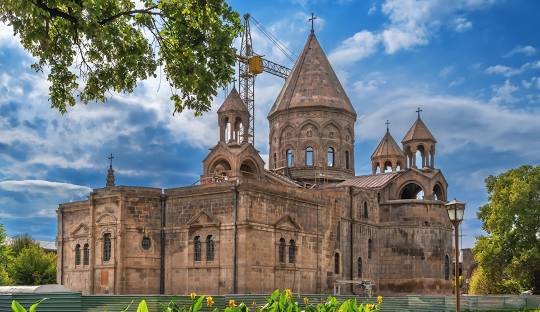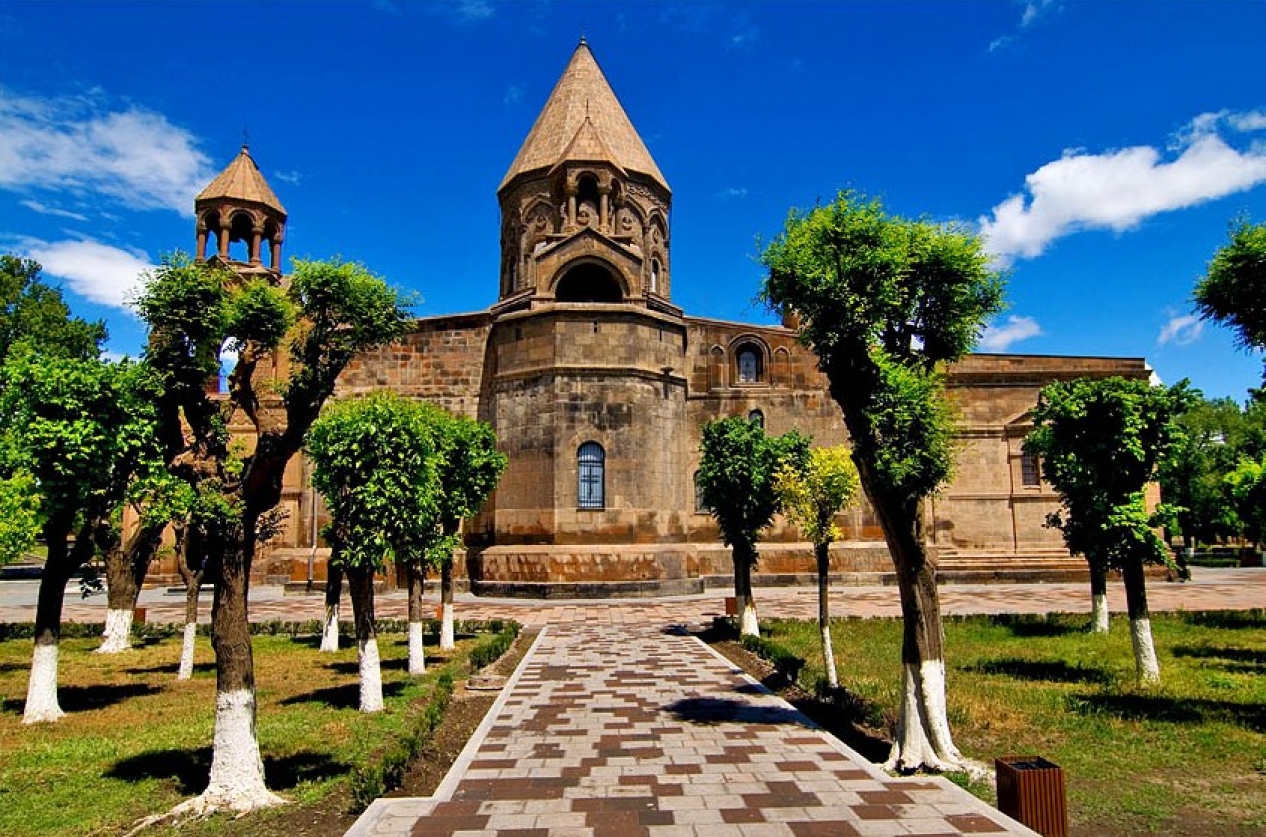



Vagharshapat is the 5th-largest city in Armenia and the most populous municipal community of Armavir Province, located about 18 km west of the capital Yerevan, and 10 km north of the closed Turkish-Armenian border. It is commonly known as Ejmiatsin, which was its official name between 1945 and 1995. Wikipedia
April to October: Ideal for sightseeing and walking tours.
Spring and autumn offer mild weather and fewer crowds.
Religious holidays (like Easter or Vardavar) bring special services and ceremonies.
Just 20–30 minutes by car from Yerevan.
Marshrutkas (minibuses) run frequently from Yerevan’s Kilikia or Masiv bus stations.
Very accessible — it’s one of the easiest day trips from the capital.
Etchmiadzin Cathedral (4th century): The oldest Christian cathedral in the world, built after Armenia adopted Christianity in 301 AD. It’s the center of the Armenian Apostolic Church.
Mother See of Holy Etchmiadzin: Includes the cathedral, residence of the Catholicos, theological seminary, and museums.
Saint Hripsime Church (7th century): A stunning example of early Christian Armenian architecture.
Saint Gayane Church (7th century): Equally historic and spiritually important.
Shoghakat Church (17th century): The fourth key pilgrimage church in town.
Treasury Museum: Home to ancient relics like the Holy Lance, religious manuscripts, and sacred garments.
Attend a church service in the cathedral or visit during a special liturgy.
Walk between the historic churches — each is a short stroll from the next.
Visit the museums for rare religious artifacts and historical exhibits.
Relax in the peaceful gardens surrounding the religious complex.
Observe pilgrims and clergy — Vagharshapat is a living center of Armenian Christianity.
Guesthouses and small hotels are available, many run by locals.
Many visitors stay in Yerevan and visit Vagharshapat as a half-day or full-day trip.
Overnight stays are peaceful, with a slower village-like rhythm.
Several family-run cafés and restaurants offer traditional Armenian dishes like:
Tolma, khorovats, and harissa
Lavash and local cheeses
Apricot-based desserts and herbal teas
Food near the churches is simple, fresh, and served with local hospitality.
This is the spiritual capital of Armenia, where religion and identity are deeply intertwined.
Pilgrimage and worship are central to daily life here.
You’ll see seminarians, nuns, and clergy in traditional robes throughout town.
Religious ceremonies, processions, and festivals often take place around the cathedral.
Dress modestly when entering churches — cover shoulders and knees.
Avoid loud conversation and photography during services.
Plan a weekday visit for a quieter experience.
Sundays are vibrant, with full services, choirs, and larger crowds.